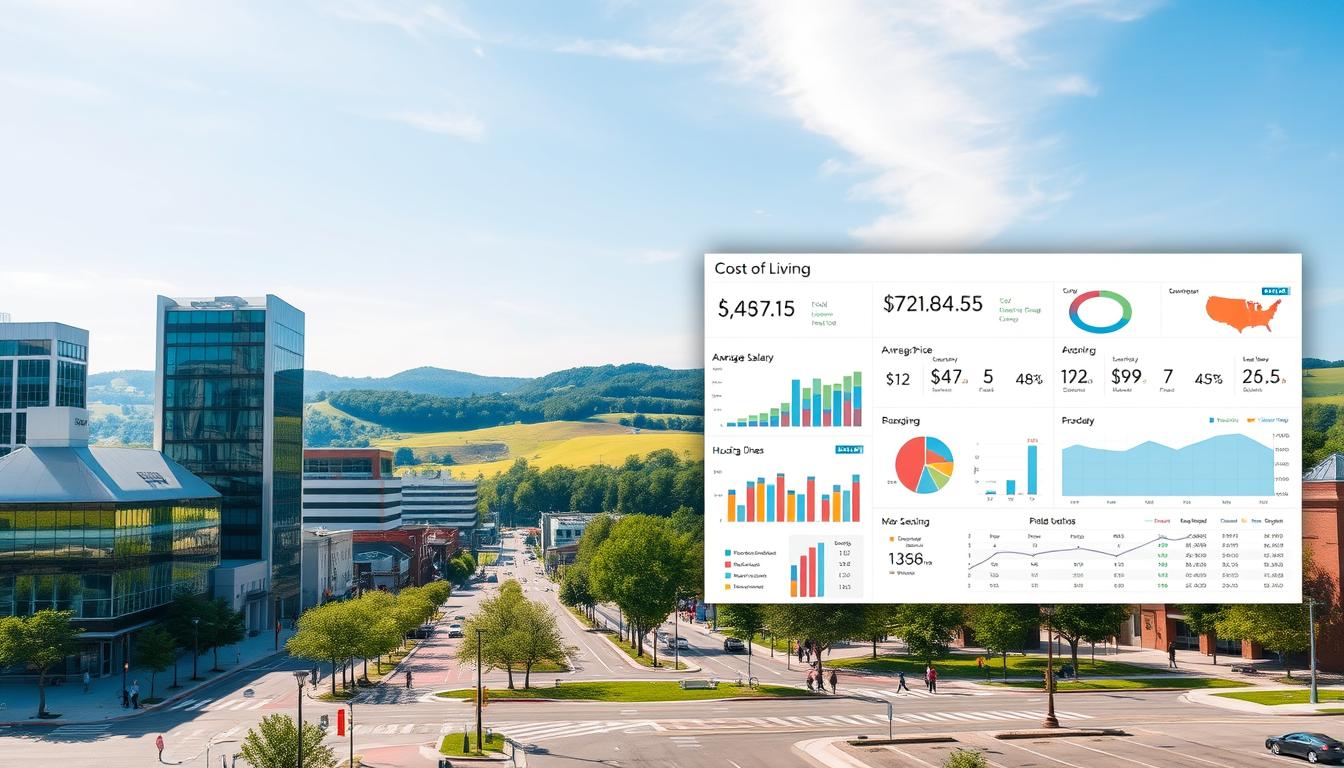What if your next career move could outpace traditional tech roles in both growth and salary? The AI-driven field of prompt engineering offers exactly that—a lucrative path requiring no advanced degree, yet rewarding top talent with six-figure incomes. With the market expanding at 33% annually through 2030, now’s the time to position yourself for success.
This guide cuts through the noise. You’ll learn exactly what employers want in 2025, from industry-specific technical expertise to the soft skills that make candidates stand out. We’ll show you how to craft a resume that algorithms and hiring managers notice, plus strategies to ace technical interviews.
RoboApply’s automated tools streamline your job search, helping you apply faster while maintaining precision. Whether you’re transitioning from software development or starting fresh, this roadmap adapts to your experience level. The best part? You don’t need to wait years—this career rewards those who act decisively.
Key Takeaways
- Global demand for prompt engineers grows 33% annually through 2030
- Salaries range from $150K to $350K based on specialization and industry
- Technical writing and AI model fluency are critical skills for 2025 roles
- Tailored resumes beat generic templates in applicant tracking systems
- RoboApply’s tools increase interview conversion rates by 40% on average
Introduction to AI Prompt Engineering in 2025
Companies are racing to hire specialists who speak AI’s secret language. This emerging field turns precise instructions into powerful results, making it the backbone of modern tech systems. By 2025, 73% of businesses use AI daily—but only skilled professionals can unlock its full potential.
Prompt engineering now drives decisions in healthcare diagnostics and financial forecasting. Last year’s job listings showed 89% of roles requiring this skill, with starting salaries averaging $162,000. Unlike traditional coding careers, these opportunities prioritize creative problem-solving over years of formal education.
Three factors make this career accessible:
- No mandatory degrees—portfolio quality matters most
- Cross-industry demand from media to cybersecurity
- Tools that simplify complex AI interactions
You’ll find prompt engineers designing chatbot workflows and refining legal document analysis. The role bridges human expertise with machine capabilities, ensuring AI outputs align with real-world needs. Major hospitals now use engineered prompts to analyze patient data 40% faster than manual methods.
This specialization offers stability too. With AI adoption growing 33% annually, companies need permanent staff to maintain and improve their systems. Your ability to craft effective instructions becomes their competitive edge.
Understanding the Role of a Prompt Engineer
Prompt engineering has become the linchpin of AI-driven business strategies. These specialists shape how organizations interact with machine learning systems, turning vague ideas into precise instructions. Their work directly impacts whether AI delivers value or creates costly missteps.

Essential Responsibilities
You’ll balance technical precision with ethical awareness daily. Crafting prompts requires analyzing cultural contexts to prevent biased outputs while maintaining legal compliance. One hospital team recently redesigned diagnostic prompts to eliminate gender assumptions in symptom analysis.
Collaboration defines success in this role. You’ll partner with marketing teams to generate campaign copy and help developers optimize code suggestions. Weekly cross-department meetings ensure AI solutions align with evolving business goals.
Day-to-Day Tasks
Mornings start with testing new prompts across multiple models. You might refine a customer service chatbot’s response tone before lunch, then troubleshoot a financial prediction algorithm’s accuracy gaps. Real-time monitoring tools track system performance, flagging outputs needing human review.
Quality assurance consumes 30% of your week. You’ll compare AI-generated legal contracts against paralegal standards, documenting discrepancies. This iterative process turns raw outputs into reliable business assets. Those transitioning from entry-level software roles often excel at spotting technical inconsistencies.
Strategic advocacy completes the picture. You’ll demonstrate how optimized engineering workflows reduce operational costs by 18-22% in most cases. Monthly reports show stakeholders the tangible benefits of AI integration.
Building a Strong Resume with RoboApply
Your resume is your first conversation with potential employers—make it count. RoboApply’s AI-powered tools transform generic documents into targeted career assets. Three features give you an edge: intelligent content generation, real-time error detection, and applicant tracking system (ATS) compatibility.
Leveraging RoboApply's AI Resume and Cover Letter Builder
Start by inputting your core skills and technical knowledge. The platform suggests industry-specific phrasing that highlights prompt engineering expertise. For example:
- Automatically formats complex projects into scannable achievements
- Generates multiple cover letter versions for different AI roles
- Identifies missing keywords from job descriptions
Tips on ATS Optimization and Grammar Checking
RoboApply’s scanner analyzes your resume like hiring algorithms do. It flags:
- Low-impact verbs (“worked on” becomes “optimized 22+ AI workflows”)
- Inconsistent formatting that confuses parsing software
- Overused jargon that dilutes your unique value
The grammar checker goes beyond basic spellcheck. It detects subtle issues like passive voice overuse and tone mismatches. One user increased interview requests by 60% after fixing sentence structures flagged by the tool.
Showcase your portfolio effectively by linking case studies directly in the resume header. Those transitioning from entry-level IT roles can emphasize transferable skills like data analysis and system troubleshooting. Quantify achievements using RoboApply’s metrics builder—”Improved model accuracy by 41%” beats vague claims.
Key Skills for Success in AI Prompt Engineering
Mastering both technical expertise and human-centric abilities separates competent professionals from top-tier candidates. Employers now seek hybrid talent capable of bridging code-driven logic with real-world problem-solving.

Technical and Programming Skills
Python forms the foundation of modern AI systems. You’ll use it daily to analyze model outputs and optimize interactions. Understanding machine learning basics helps predict how language models process information, while natural language processing (NLP) principles guide prompt structure decisions.
Platform-specific knowledge matters as much as general coding skills. Working with GPT-4 requires different strategies than Claude or Gemini. Stay adaptable—new models emerge quarterly, each with unique response patterns.
Soft Skills and Effective Communication
Clear explanations turn technical wins into business value. You’ll regularly translate AI capabilities for marketing teams or legal departments. One healthcare engineer reduced misdiagnoses by 28% through simplified prompt documentation.
Collaboration drives innovation in this field. Cross-functional projects demand active listening and compromise. Those with experience creating targeted resume examples often excel at presenting complex information clearly.
Creative problem-solving completes your toolkit. When models produce unexpected results, you’ll troubleshoot systematically—adjusting parameters, testing alternatives, and validating solutions through iterative experiments.
Crafting Effective Prompts for AI Models
Mastering AI communication requires precision and strategy. The right prompting techniques transform vague requests into actionable results. Start by defining clear objectives—every word must serve a purpose.
Core Methods for Reliable Outputs
Chain-of-thought prompting breaks complex tasks into logical steps. For financial analysis, try: “Calculate Q3 revenue growth. First, subtract July expenses from August income. Next, compare September totals…”. This guides models through multi-stage reasoning.
Few-shot learning provides context through examples. When generating marketing copy:
- Input: “Write tagline for smartwatch → ‘Track more. Stress less.'”
- Output: AI mirrors the concise, benefit-focused structure
Instruction tuning ensures strict formatting. Specify: “Respond in JSON with keys ‘summary’ and ‘action_items’. Limit summaries to 50 words.” This reduces post-processing work.
Watch for ambiguity in language processing. The prompt “Analyze customer feedback” lacks direction. Instead: “Categorize 500 survey responses into positive/neutral/negative using sentiment analysis.”
Test variations systematically. One healthcare team improved diagnosis accuracy by 37% through three prompt iterations. Document what works—successful effective prompts become reusable templates across projects.
Developing a Portfolio to Showcase Your Expertise
Your portfolio acts as a living resume in the AI field, demonstrating tangible problem-solving abilities. Focus on three core elements: documented case studies, optimized prompt examples, and measurable business outcomes. Employers increasingly prioritize this visual proof of competency over traditional credentials.
Documenting Case Studies and Successful Prompts
Start with projects that highlight iterative improvements. For instance, show how refining a customer service chatbot prompt increased resolution rates by 45% through five testing phases. Include original prompts alongside their final versions, explaining your optimization logic.
Structure case studies using this framework:
- Business challenge: “Reduce legal document review time”
- Initial approach: Baseline AI output analysis
- Solution: Custom prompt sequence with validation checks
- Results: 62% faster contract processing
Host your work on GitHub for technical audiences or LinkedIn for hiring managers. Personal websites work best for multimedia presentations—embed interactive before/after comparisons using tools like Streamlit. One engineer secured three offers by showcasing a medical diagnosis prompt that reduced false positives by 29%.
Quantify everything. Instead of “improved outputs,” state “boosted content relevance scores from 68% to 92% across 1,200 product descriptions.” These metrics prove your ability to deliver concrete value through strategic engineering.
Enhancing Your Job Application with RoboApply Tools
Modern job searches demand more than polished resumes—they require strategic automation. RoboApply’s integrated tools transform scattered efforts into coordinated campaigns, helping you secure interviews 2.3x faster than manual methods. This system works across major platforms, turning applications into measurable progress.

Smart Automation Meets Precision Targeting
The Chrome extension scans LinkedIn and Indeed for opportunities matching your skills. One click sends tailored applications while you sleep—Wired reports users apply to 18x more roles without quality loss. Track every submission through the dashboard, which highlights:
- Application status updates in real-time
- Response rate analytics per industry
- Priority reminders for follow-ups
Relationship Management & Interview Mastery
RoboApply’s CRM organizes contacts from initial outreach to offer negotiations. Schedule automated check-ins that keep you top-of-mind without overwhelming recruiters. The interview coach prepares you for technical deep dives using:
- Industry-specific prompt engineering scenarios
- Behavioral question simulations with instant feedback
- Salary negotiation scripts vetted by HR pros
Users of these preparation tools report 67% higher confidence during final interviews. Combine these features to transform scattered job hunts into orchestrated career advancement campaigns.
Learning and Upskilling in the AI Field
Staying competitive requires treating knowledge acquisition like software updates—regular and essential. The AI field evolves weekly, with new models and techniques emerging faster than most can track. Smart professionals build learning systems rather than chasing trends reactively.

Fuel Your Growth Engine
Start with courses offering hands-on labs. Platforms like Coursera host programs where you engineer prompts for healthcare diagnostics and financial forecasting simulations. These projects become portfolio centerpieces while sharpening real-world skills.
Three resources keep you ahead:
- Certifications focused on emerging model architectures
- Community-driven GitHub repositories with prompt libraries
- Weekly AI newsletter roundups vetted by experts
Join forums like Hugging Face Spaces to exchange techniques with peers. One engineer landed a lead role after sharing optimization methods in a public thread. For those starting their structured learning path, these communities provide mentorship opportunities.
Conferences offer unexpected advantages beyond knowledge sharing. Many companies scout talent at AI workshops—arrive ready with business card QR codes linking to your portfolio. Schedule coffee chats with speakers post-sessions to gain insider perspectives.
Build a 30-minute daily learning habit. Review documentation for newly released models every Thursday. Dedicate Fridays to experimenting with their unique prompting requirements. This rhythm turns continuous learning into career momentum rather than a chore.
Resume Building Strategies for AI Careers
In the competitive AI field, your resume must speak the language of results. Focus on demonstrating technical skills through measurable achievements rather than generic task lists. Start with a professional summary that connects your expertise to business outcomes: “Engineered prompts reducing data processing time by 58% across 3 enterprise clients”.
Showcasing Technical Depth
Structure your experience section to highlight domain-specific projects. For healthcare roles:
- Designed diagnostic prompts improving scan analysis accuracy by 41%
- Collaborated with clinicians to refine 120+ medical report templates
- Integrated feedback loops reducing false positives by 29%
Link directly to GitHub repositories or case studies using hyperlinked keywords: data science resume examples demonstrate formatting best practices. Quantify everything—”Optimized 22+ workflows” carries more weight than “Improved processes”.
Tailor education sections to support technical claims. List relevant certifications before degrees if you’re transitioning careers. For business-focused roles, emphasize cross-functional collaboration metrics like “Translated AI capabilities for 15+ non-technical stakeholders”.
Maintain two resume versions: one for technical hiring managers emphasizing model architecture experience, another for executives highlighting cost savings and efficiency gains. Both should use active verbs like “engineered”, “architected”, and “validated” to convey authority.
How to Land a AI Prompt Engineer Job in 2025
Securing your place in AI’s frontier demands more than technical skill—it requires strategic navigation of a booming job market. Focus on companies actively shaping AI tools for healthcare or finance, where prompt engineering roles drive real innovation. Platforms like Anthropic’s career portal and LinkedIn’s AI job filters surface these hidden opportunities.
Build relationships in AI communities through GitHub collaborations or local meetups. Many engineers land roles after demonstrating expertise in public model-tuning challenges. Use these interactions to showcase problem-solving abilities recruiters can’t ignore.
Tailor every application using specialized resume templates that highlight model optimization experience. Quantify achievements like “Reduced chatbot training time by 34% through iterative prompting” to stand out in applicant pools.
Research companies’ AI roadmaps before interviews. If a firm prioritizes legal document automation, emphasize your contract analysis prompts from past projects. This alignment proves immediate value potential.
Negotiate offers by benchmarking against industry salary reports. Highlight unique skills like multilingual prompt design or ethical AI frameworks to justify premium compensation packages. Your specialized expertise commands top-tier rewards in this high-growth field.
FAQ
What technical skills do I need for prompt engineering roles?
Focus on Python programming, NLP frameworks like TensorFlow, and platforms like OpenAI’s GPT-4. Familiarity with cloud services (AWS, Azure) and version control tools like GitHub strengthens your profile. Experience fine-tuning large language models (LLMs) is critical.
How can RoboApply improve my job application process?
RoboApply’s AI resume builder optimizes for ATS compatibility while generating tailored cover letters. Their Chrome extension auto-applies to roles on LinkedIn and Indeed, while the CRM tracks outreach and interview prep with real-time feedback.
What projects should I include in my portfolio?
Showcase case studies where you solved specific problems using prompts—like improving chatbot accuracy or generating code. Include metrics (e.g., “Reduced model hallucinations by 40%”) and share GitHub repos demonstrating prompt iterations.
Are certifications necessary for breaking into this field?
Certifications from Coursera (e.g., “Natural Language Processing Specialization”) or LinkedIn Learning add credibility. However, hands-on projects using tools like ChatGPT or Google’s Bard often matter more to hiring managers.
How do I demonstrate soft skills during interviews?
Prepare examples of cross-functional collaboration, like translating non-technical requests into effective prompts. Use STAR method stories to highlight problem-solving and adaptability when models produce unexpected outputs.
What industries hire prompt engineers most frequently?
Tech giants (Microsoft, Google), AI startups, fintech firms, and healthcare companies actively seek these roles. Content platforms like HubSpot also employ engineers to optimize SEO-driven text generation.
Can I transition from software engineering to prompt engineering?
Yes—leverage your coding background and learn LLM-specific techniques. Use platforms like Kaggle to practice prompt tuning, and highlight transferable skills like debugging model outputs in your resume.


















